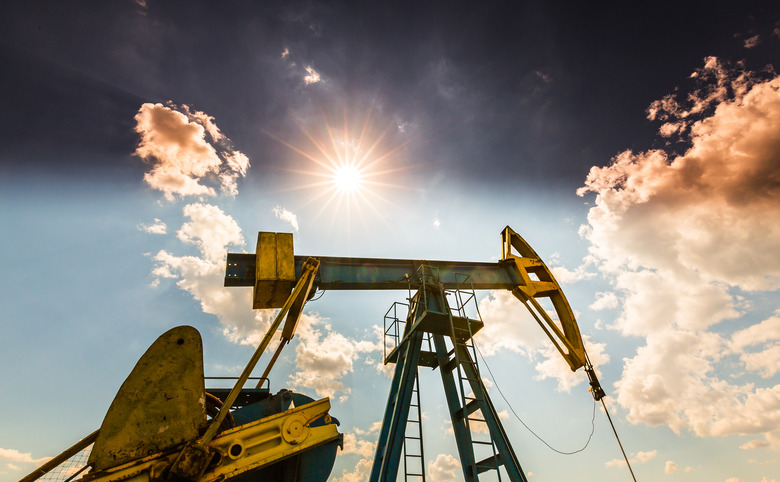Three Factors That Affect Water Tables
Continued drought represents a significant threat to the water table, especially in California's Central Valley, a 20,000 square-mile farming area sandwiched between the Sierra Nevada mountains on the east and California's coastal ranges on the west. Water tables exist beneath the ground below the area of aeration – the space between the land surface and the water table. Filled by rainwater runoff and snowmelt, the water table must be regularly replenished, or it begins to deplete.
TL;DR (Too Long; Didn't Read)
Water tables are affected by several factors:
* Seasonal rainfall and droughts
* Salt contamination
* Nitrates and phosphates from fertilizers
* Bacteria from barnyard runoff or septic systems
* Pesticides and fertilizers
Water Table Drawdown and Pumping
Water Table Drawdown and Pumping
When farmers, manufacturers and even residents continually pump water at a combined rate of thousands of gallons per minute, the water table experiences a drawdown – an unnatural and rapid depletion in the underground reservoir. As the water table rapidly drops, it experiences distress. Like a bank account without regular deposits, eventually the account runs dry. During years of drought, groundwater takes up the load for irrigation, as surface water reservoirs – from snowmelt and runoff – are also depleted, resulting in greater reliance upon these underground aquifers.
Fracking Underground
Fracking Underground
In Pavillion, Wyoming, a town of 231 people, Stanford researchers discovered in 2016 that the effects of hydraulic fracking contaminated the water table. In addition to injecting toxic chemicals into the ground, such as benzene and xylene, the many companies that fracked the site in the last 40 plus years dumped production and drilling fluids containing diesel fuel directly into unlined pits and failed to adequately create cement barriers to protect the groundwater. Oftentimes these many corporations simply drilled at the same level of local wells – the water table level – and thus polluted the water in the area. Stanford researchers say there are not enough rules in place to keep this from happening elsewhere.
Contaminants Affect the Water Table
Contaminants Affect the Water Table
A host of contaminants affect the water table from fertilizers, barnyard runoff, salt systems and badly constructed wells to septic system placement and construction. Misuse and overuse of lawn fertilizers can have an environmental impact on groundwater, as well as on surface lakes and reservoirs. Lawn and garden fertilizers enter the groundwater when it rains and leach into rivers that feed the water table. This becomes especially problematic in areas where the soil is compacted and hard, which doesn't allow the soil to filter out these contaminants. The chemicals in fertilizers, nitrogen and phosphates, contaminate the water and make it unsuitable for drinking or irrigation across the country.
Barnyard runoff poses a health problem by adding bacteria to lakes and streams that feed the water table. Many homeowners use salt to soften water. In several rural homes, the waste water from the salt treatment dumps atop the soil, leaching salt into the ground and surface waterways. Once too much salt enters an aquifer, it can no longer be used for drinking or irrigation. Wells not constructed to meet safety standards to prevent surface water and bacteria from getting into the well pose a problem for the entire aquifer when the well's depth enters the water table. Improperly built septic systems can percolate effluent into a well with access directly into the water table.
Cite This Article
MLA
Brenner, Laurie. "Three Factors That Affect Water Tables" sciencing.com, https://www.sciencing.com/three-factors-affect-water-tables-7930803/. 11 April 2018.
APA
Brenner, Laurie. (2018, April 11). Three Factors That Affect Water Tables. sciencing.com. Retrieved from https://www.sciencing.com/three-factors-affect-water-tables-7930803/
Chicago
Brenner, Laurie. Three Factors That Affect Water Tables last modified March 24, 2022. https://www.sciencing.com/three-factors-affect-water-tables-7930803/
